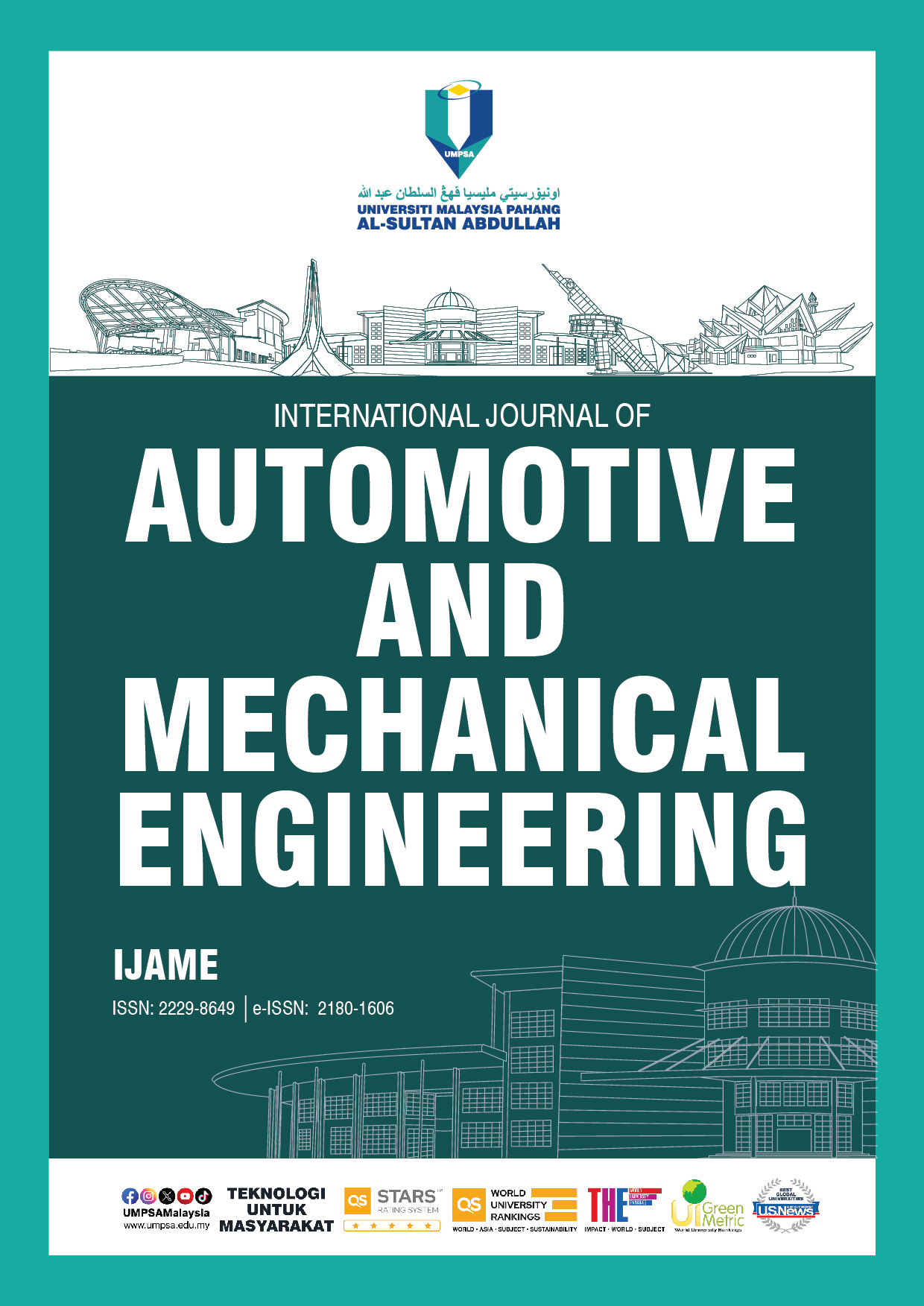Influence of Friction Stir Processing on the Hardness and Tribological Properties of Aluminium-Magnesium Alloys
DOI:
https://doi.org/10.15282/ijame.21.2.2024.19.0882Keywords:
Friction Stir Processing, Aluminum Alloy, Hardness, Wear, MicrostructureAbstract
In this study, we have employed friction stir processing to strategically modify the microstructure of AA-Mg alloys, resulting in a direct enhancement of their mechanical properties. The experiments encompassed a range of tool speeds ranging from 800 to 1600 rpm and feed rates ranging from 20 to 80 mm/min. Employing a single-pass approach across all combinations, samples were extracted from the stir zone region to evaluate hardness and wear characteristics. The evaluation involved Vickers hardness tests to quantify hardness and pin-on-disc tests to examine the tribological attributes of the specimens. The worn-out surfaces of the specimens were examined using scanning electron microscope imagery. There is a substantial increase in hardness when compared with the base material, i.e., 78 HVN is up to 96 HVN for 20 mm/min at 1200 rpm, 98 HVN for 20 mm/min at 800 rpm, 106 HVN for 60 mm/min at 1600 rpm and 96 HVN for 80 mm/min at 1600 rpm. Furthermore, the coefficient of friction increased from 0.341 for base materials to a maximum of 0.635, 0.667, 0.604, and 0.646 for the same combination of speed and feed rate, respectively. The maximum change in percentage is 26% in hardness and 49% in wear coefficient.
Downloads
Published
Issue
Section
License
Copyright (c) 2024 The Author(s)

This work is licensed under a Creative Commons Attribution-NonCommercial 4.0 International License.







